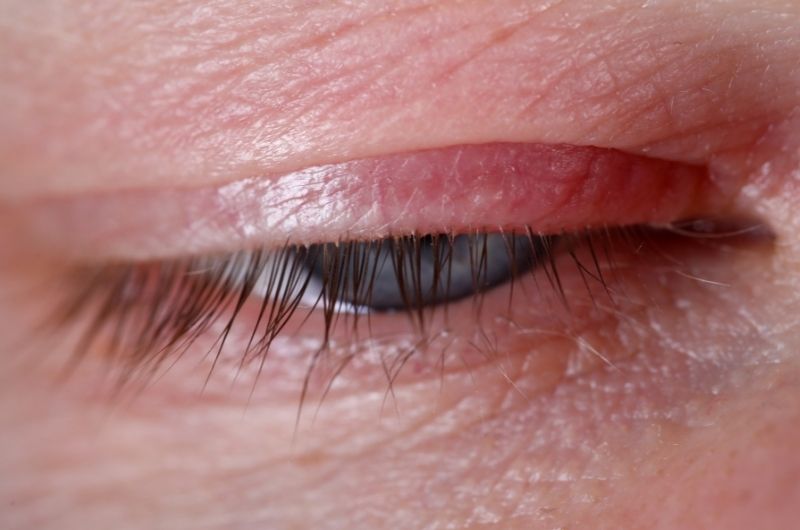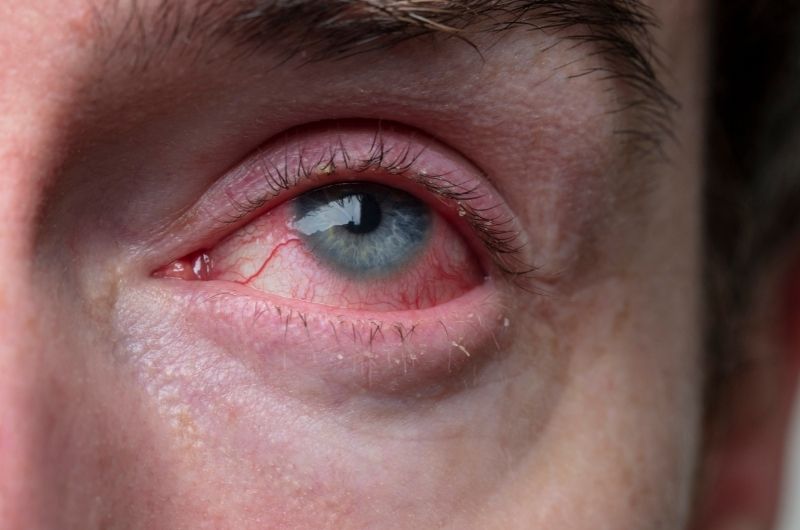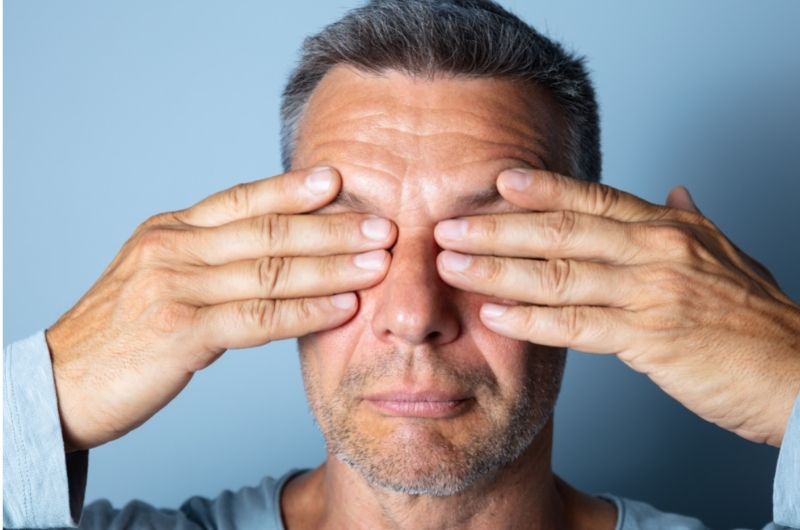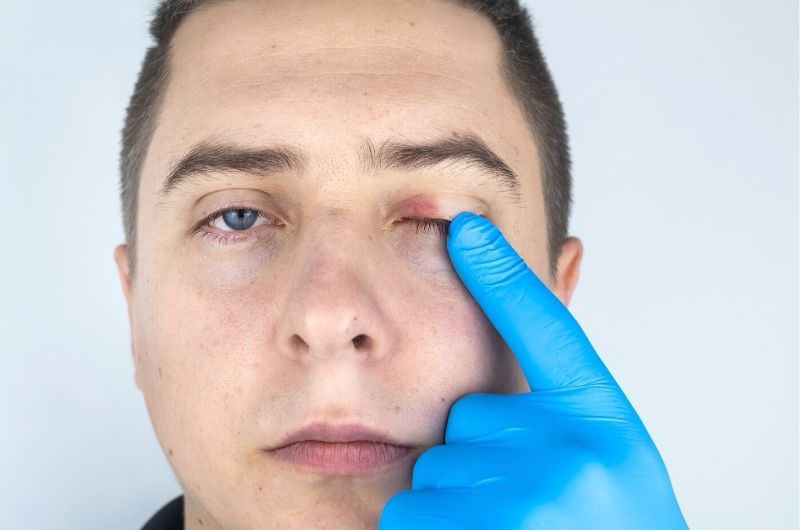Practicing good eyelid hygiene is essential to keep your blepharitis symptoms under control. Using a hot compress, eyelid massage, and then diluted baby shampoo to cleanse your eyelids will help unclog your eyelids’ oil glands. Eating various foods rich in vitamins, minerals, fiber, and healthy fatty acids will prevent you from flare-ups. There is no known cure for blepharitis, but prescription medicines, home remedies, therapies, and lifestyle changes will alleviate your symptoms.
Your eyelids act as a cover or shield to your eyes. These are the tiny, movable folds of skin that protect your eyeballs from excessive light.
It also maintains moisture by distributing tears all over the surface of your eyeballs, which is essential to prevent irritation and dryness that may cause damage to your vision.
But did you know that sometimes you can put your eyelids at risk for inflammation?
Though this condition isn’t contagious nor causes blindness, it is still horrendous as it can give you massive eye discomfort and is very unsightly, especially if there is an infection.
The thing is, there is no definite cure for this condition as the exact cause is unknown.
However, there are medications and some home remedies you can follow to keep your symptoms under control.
What is blepharitis?
The oil glands of the hair follicles in your eyelids can become clogged or irritated, causing inflammation of your eyelids (blepharitis).

There are no exact known causes of blepharitis, but certain risk factors can make you susceptible to chronic eyelid inflammation.
Below are certain risk factors:
- An inflammatory reaction to bacteria that typically live on your eyelids
- Bacterial or viral infection (e.g., herpes simplex virus)
- Clogged or malfunctioning of oil glands that causes inflammation of the inner edge of your eyelid
- Demodex eyelash mites or lice
- Skin conditions like seborrheic dermatitis or rosacea
- A severe case of dandruff on the scalp or eyebrows, which usually causes inflammation on the outer edge of your eyelids
- Allergies to eye medication, eye makeup, contact lenses, or other cosmetic products you apply around your eyes
- Dry eyes
Blepharitis usually affects the eyelids of both of your eyes. It can occur on the:
- Outside of your eyes or on the front edge of the eyelid where your eyelashes are located (anterior blepharitis).
- The inner edge of your eyelid closest to your eyeball (posterior blepharitis).
What are the symptoms of blepharitis?
Blepharitis can give you a lot of symptoms, especially a high degree of discomfort in your eyes.

These could worsen specifically in the morning as you wake up.
Symptoms will come and go. Some days you won’t have any symptoms but expect that you’ll have some flare-ups the following days.
Below are some common symptoms that could be signs of eyelid inflammation:
- Watery, red eyes
- A gritty, burning, or stinging sensation in the eyes
- Feeling like there’s something (debris) in your eyes
- Greasy or oily eyelids
- Red, swollen, or inflamed eyelid margins
- Itchy eyelids
- Flaky skin around the eyes
- Crusted eyelashes or the skin on the corners of your eyes
- Eyelids sticking or clumping
- Feeling the need to blink frequently because of blurry vision
- Sensitivity to light
Medications and home remedies
Your doctor may prescribe you medicines and recommend you follow a routine within four to six weeks. This should help you resolve acute blepharitis.
But even if you respond well to the first course of treatments, you might continue receiving medications for up to three months.
Please always seek advice from a medical expert or professionals on your concerns for treating blepharitis.
Medications for blepharitis
1. Topical and oral antibiotics
Antibiotics help relieves symptoms of eyelid disorders caused by bacterial infection.
Your doctor might prescribe you antibiotic ointment like bacitracin ophthalmic or antibiotic eye drops such as a combination of polymyxin B and trimethoprim.
Sometimes, oral antibiotics are prescribed when the infection spreads and becomes persistent, like treating meibomian gland dysfunction in patients with chronic blepharitis.
2. Anti-inflammatories and immunosuppressants
Steroid eye drops, creams, or ointments help reduce swelling and inflammation.
If your doctor thinks you need stronger medications, you might receive topical eye medications containing both steroids and antibiotics.
In severe cases of blepharitis involving posterior eyelid inflammation, your doctor might prescribe you topical immunosuppressants to block your body’s natural immune response and prevent severe inflammation.
3. Artificial tears
These are available over the counter, and your doctor might prescribe you to use artificial tears during the day to treat excessive tearing or dry eyes caused by blepharitis.
Remember to choose artificial tears with no preservatives.
4. Eyelid washes
Keeping your eyelid clean at all times will help prevent further complications.
Your doctor will recommend you do eyelid scrubs with saline or hypochlorous acid to maintain the healthy number of bacteria in your eyelids and avoid infection.
5. Treatments for underlying causes
Your doctor might prescribe specific medicines to treat underlying causes such as skin conditions like seborrheic dermatitis, rosacea, dandruff, or other diseases.
Home remedies and lifestyle changes to treat blepharitis
Self-care is essential in treating blepharitis. Make it part of your daily routine and combine it with medications to see better results.
1. Avoid using eye cosmetics
Avoid using mascara, eyeliner, and other eyes makeup products. If possible, refrain from using contact lenses.
2. Do warm compresses to loosen dirt and oil
Using a soft cloth, dip it in warm water and then place it over your closed eyelids. Soak it again with warm water and reapply for up to 10 minutes.
Proceed to massaging and cleansing your eyelids after a warm compress.
3. Massage your eyelids to loosen any oils backed up in the eyelid’s oil glands

Using a clean washcloth, cotton-tipped applicator or swab, or your finger, gently massage the margins of eyelids where your eyelashes and glands are in a small circular motion to loosen oily contents in your glands.
4. Wash eyelids regularly with diluted baby shampoo to remove crusts
Dilute 2 to 3 drops of baby shampoo in warm water.
Soak a cotton swab on the solution and gently rub it on the margin of your eyelid.
You should make this your everyday routine and do this two times a day.
Therapy for blepharitis
There are available therapies like thermal pulsation therapy (LipiFlow) and light burr therapy (BlephEx) that your ophthalmologist and dermatologist will recommend to unclog your eyelids’ oil glands and reduce symptoms of meibomian gland dysfunction (MGD).
Experts say that MGD may cause dry eye syndrome, leading to blepharitis.
But, there’s an overlap with these eye disorders, which means there isn’t much clear information on which condition comes first.
FAQs
Is kajal good for blepharitis?
There is insufficient evidence that kajal is safe to use and effectively reduces blepharitis symptoms.
Traditional eye care makeups like kajal and kohl have long been used since ancient times.
Many people claim that both products benefit eye health and treat eye diseases such as blepharitis, cataract, conjunctivitis, etc.
However, most commercially made kajal and other similar eye products contain high levels of lead, a very poisonous substance that can cause poisoning.
The U.S. Food and Drug Administration does not approve these products for cosmetic and other purposes.
Please do not use kajal as it’s not proven 100% safe.
If you’ve been exposed to it or other similar materials, stop using it and see your doctor immediately.
Is Vaseline suitable for blepharitis?
Yes, it is. You can apply Vaseline to your eyelid glands or eyelashes as a moisturizer.
Please use cotton swabs and not your fingers when applying.
Vaseline is safe for use around the skin on your eyes, and allergic cases are rare.
But, if you’re prone to having eye infections, please check with your eye doctor before using the product.
Does diet affect blepharitis?
Yes, your diet might contribute to your flare-ups.
Your doctor will most likely recommend you avoid processed or fried foods and fizzy drinks and limit sugar, wheat, and white flour.
Instead, include various nutritious food in your diet rich in vitamins, minerals, fatty acids, and fibers.
Increase your water intake and take food supplements with Omega 3, 6, 9 vitamins.
Do tea bags help blepharitis?
Yes, tea bags have been used a lot as an effective home remedy in reducing dark circles, puffiness, and redness of the eye as well as irritation, styes, and pink eye.
You can use tea bags as your warm compress.
Place it warm over your closed eye for one minute to loosen the crust in your eyelashes and unclog your eyelids’ oil glands.
Conclusion
Treating blepharitis takes the right combination of medicines and at-home treatments, and a low-oxalate diet to keep your symptoms under control.
Always practice regular eyelid hygiene and follow your doctor’s advice on taking your medications.
Remember to check with an eye doctor immediately when blepharitis symptoms occur, such as watery, red, burning, or stinging sensation in your eyes, swollen or inflamed eyelid margins, sensitivity to light, and blurry vision, as these may also indicate a chronic eye infection.
Blepharitis doesn’t go away on its own, and when left untreated, it could lead to severe complications.



